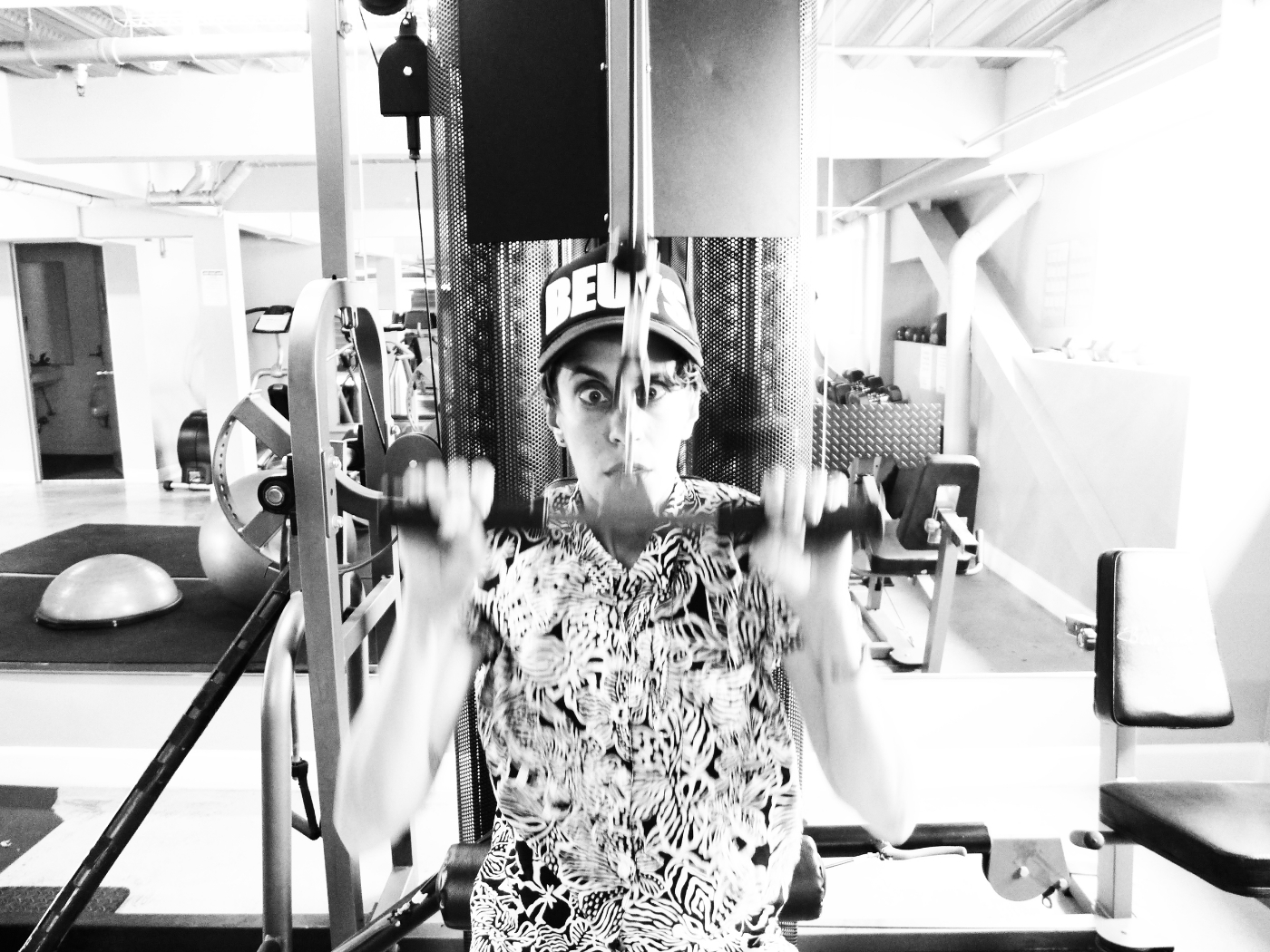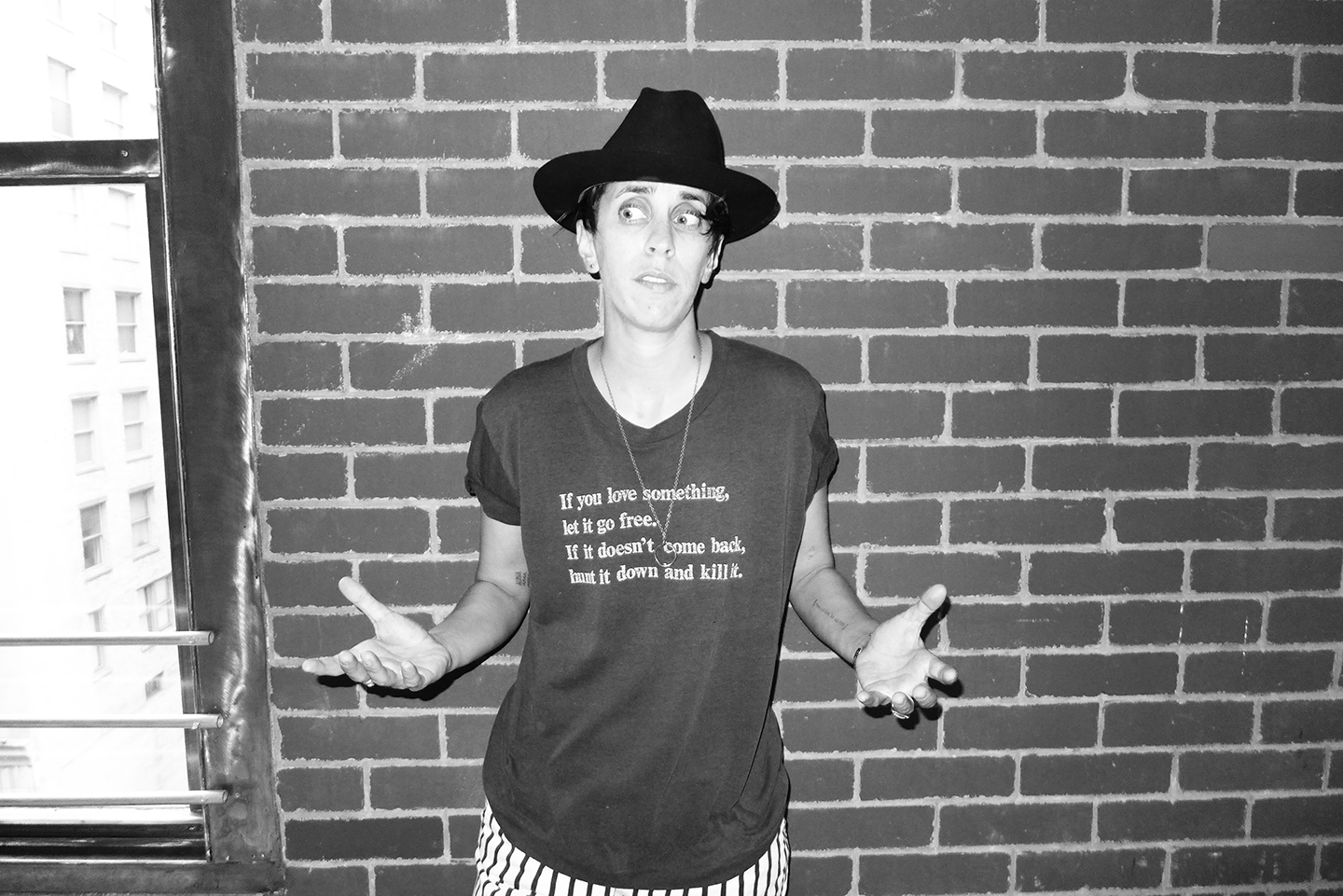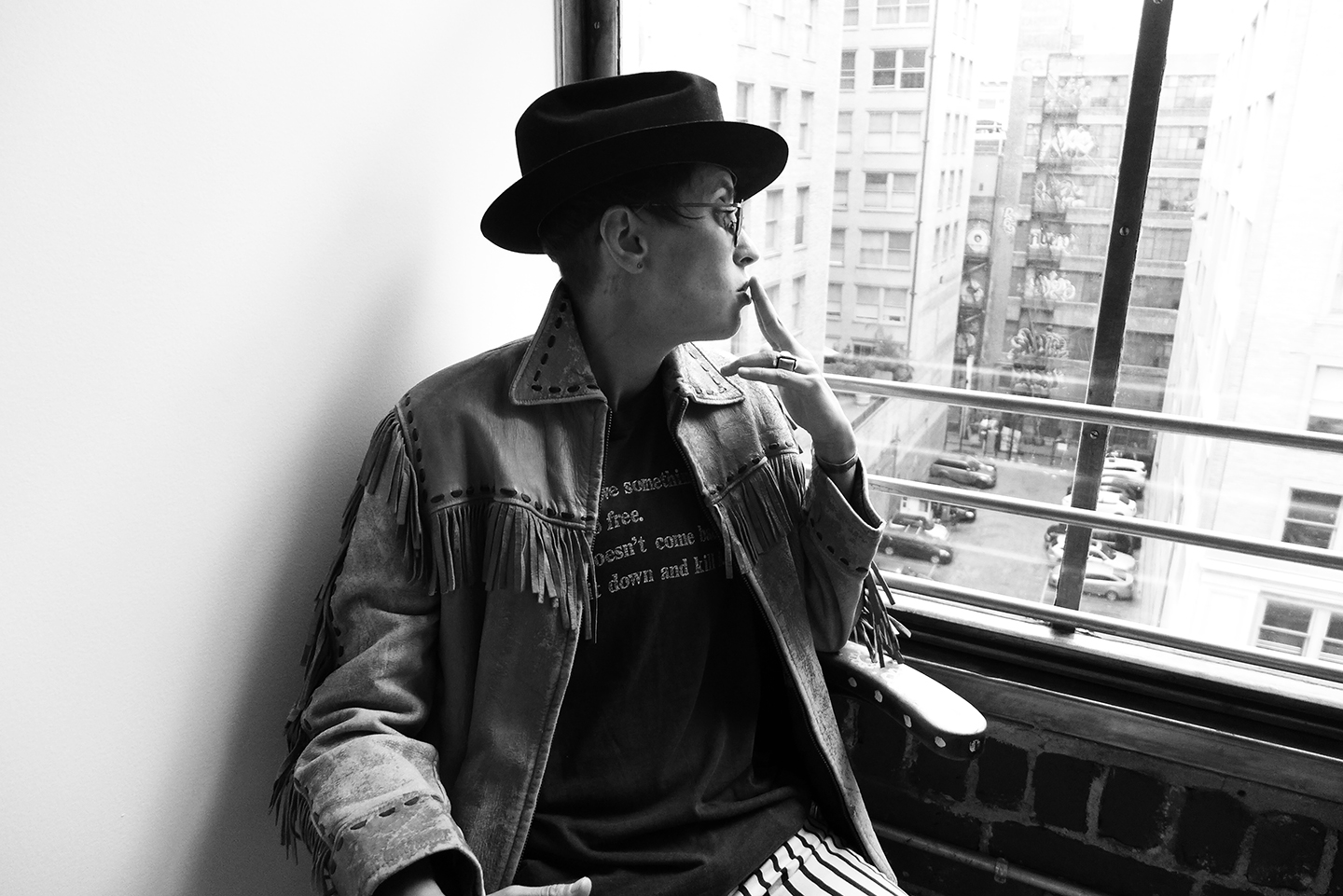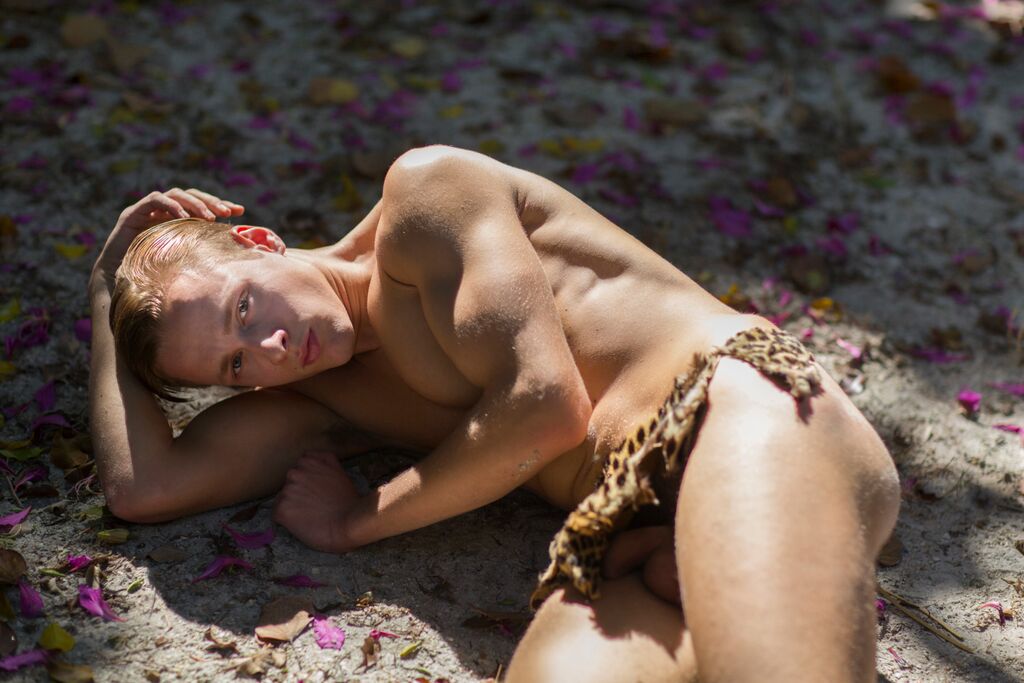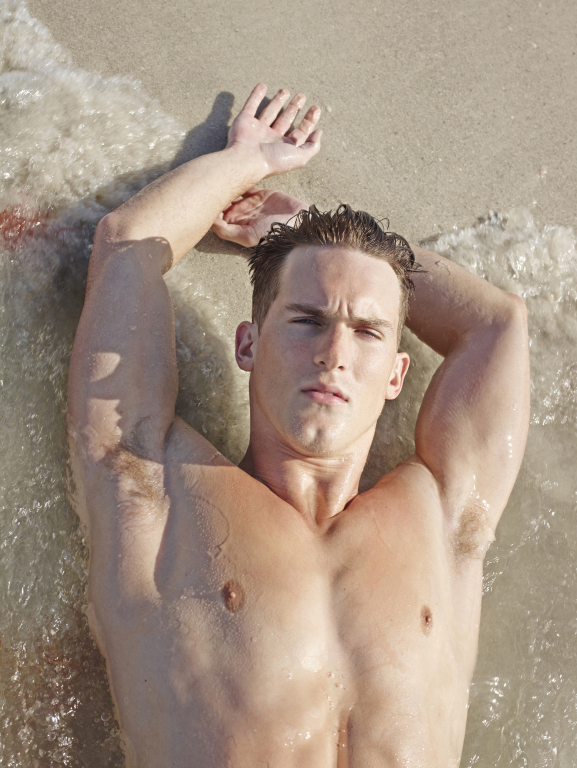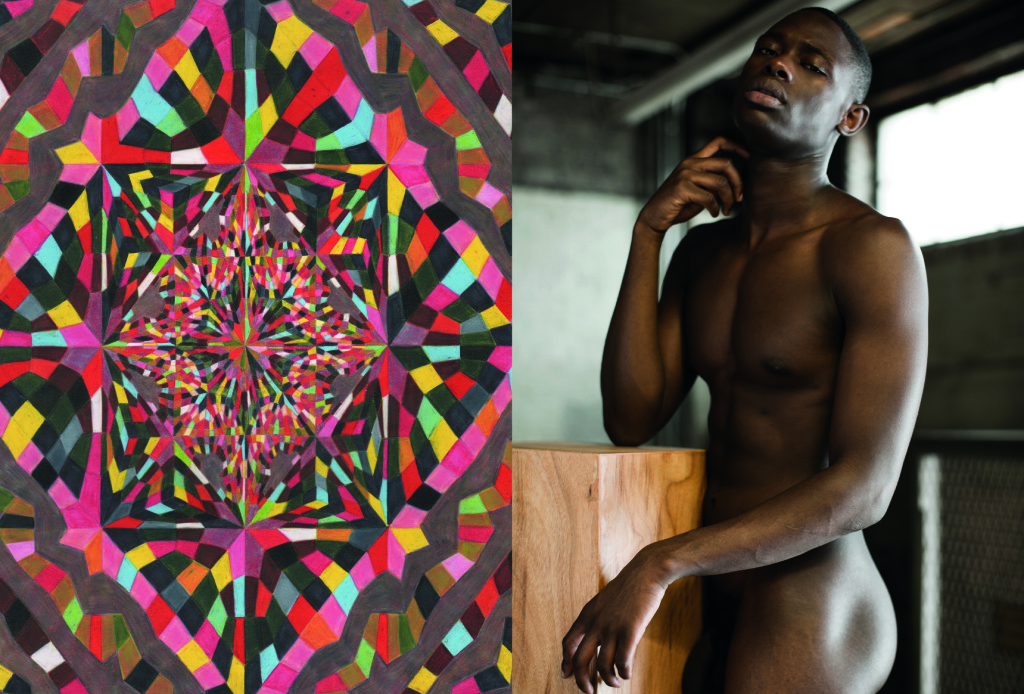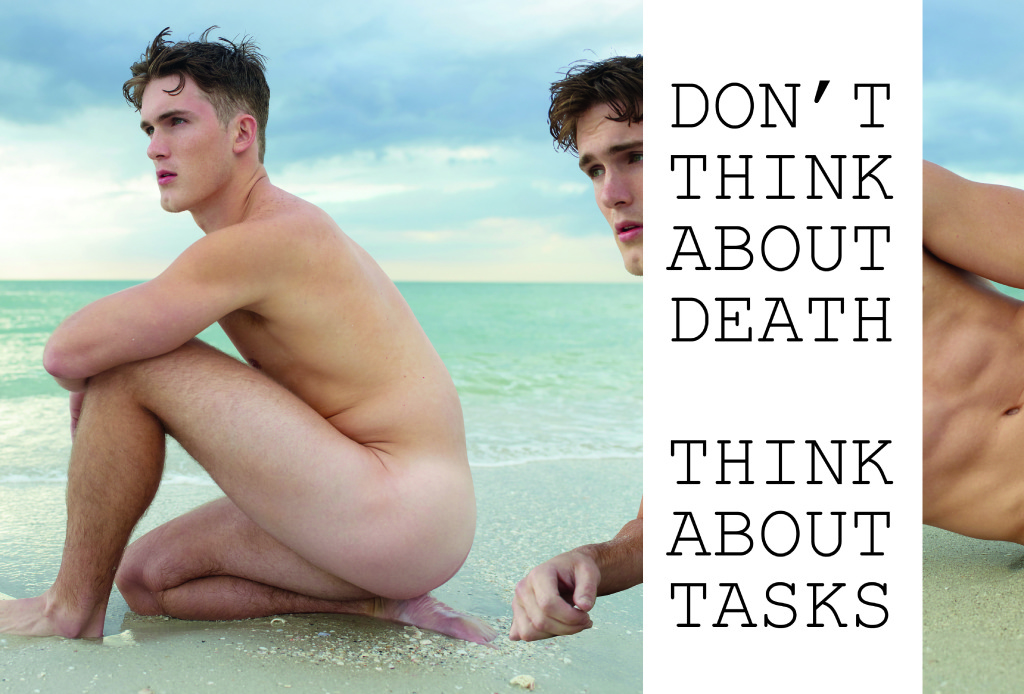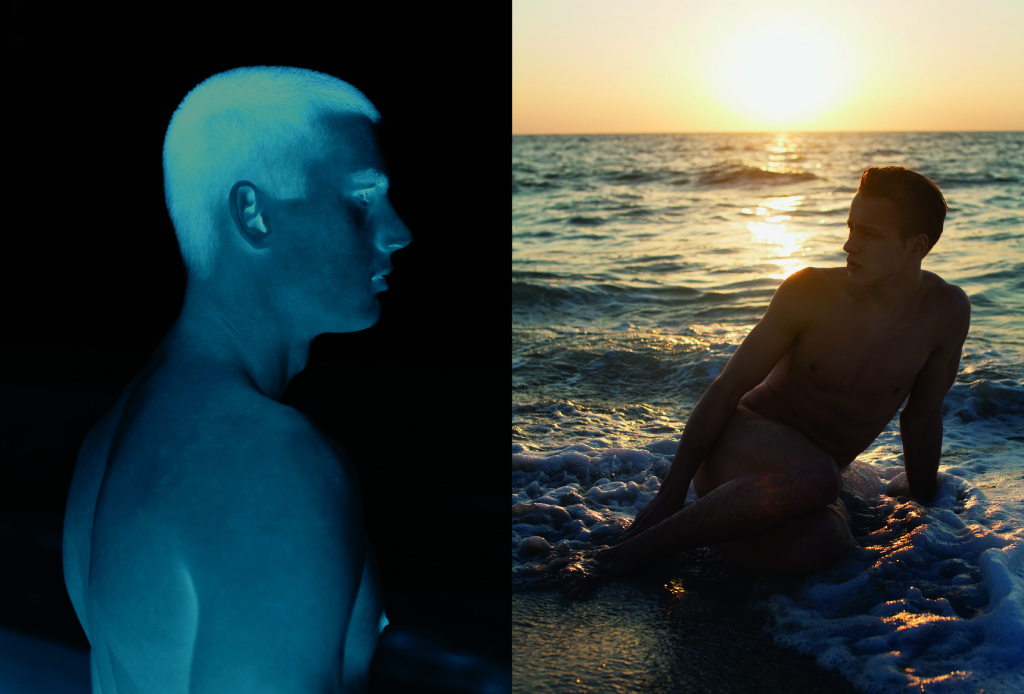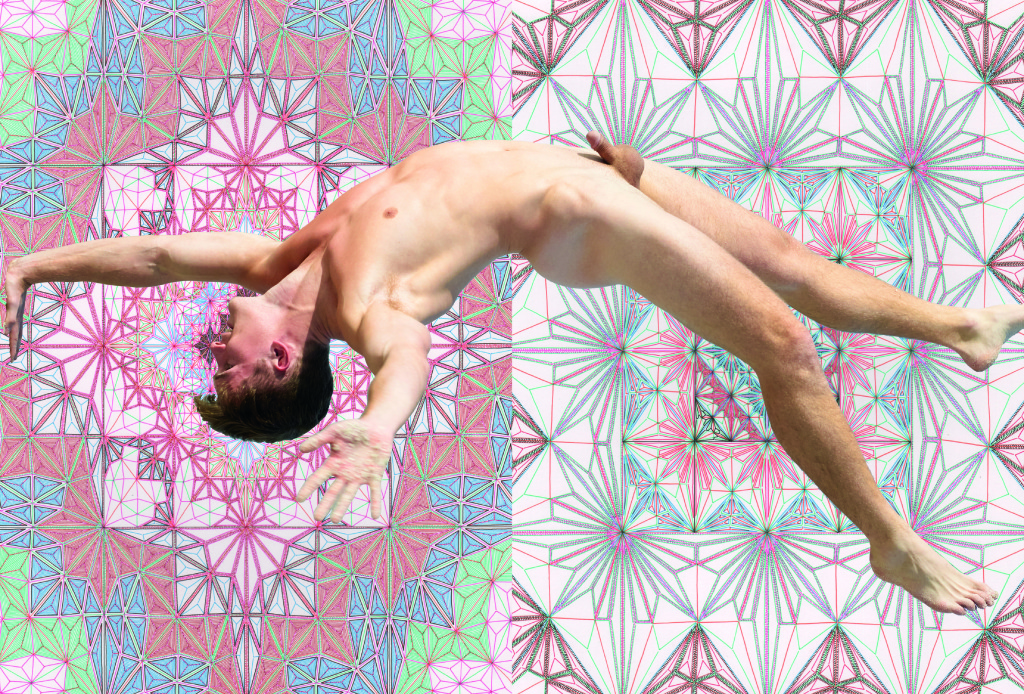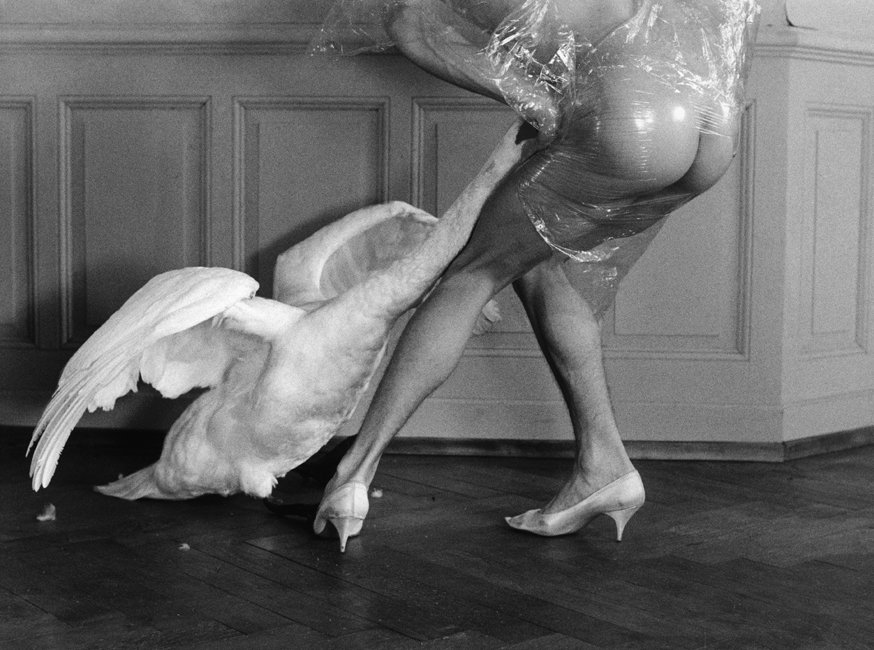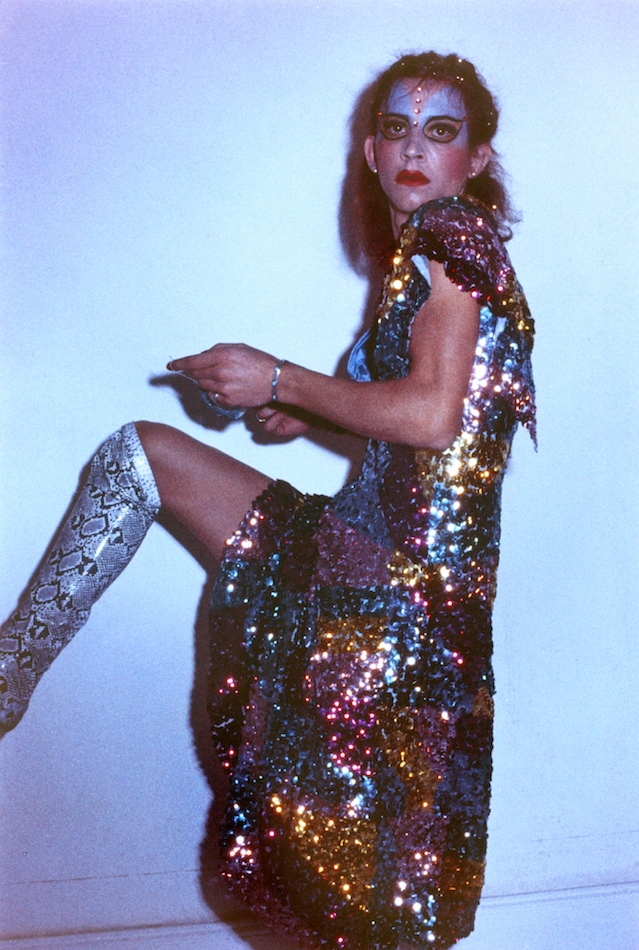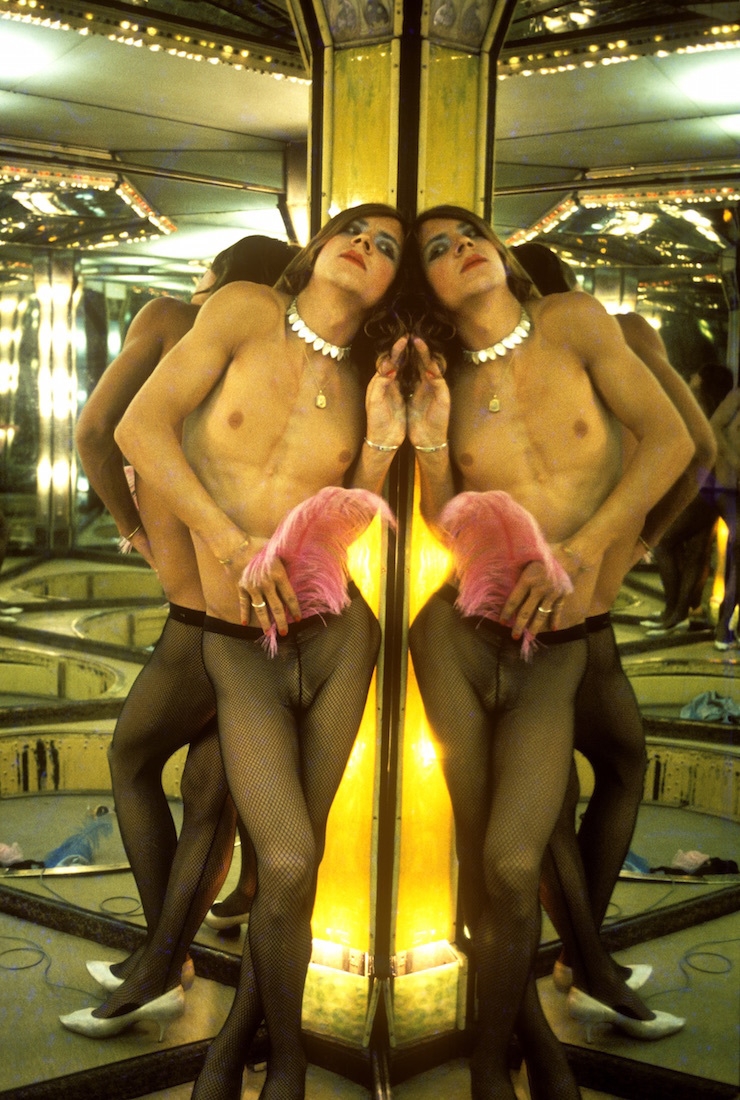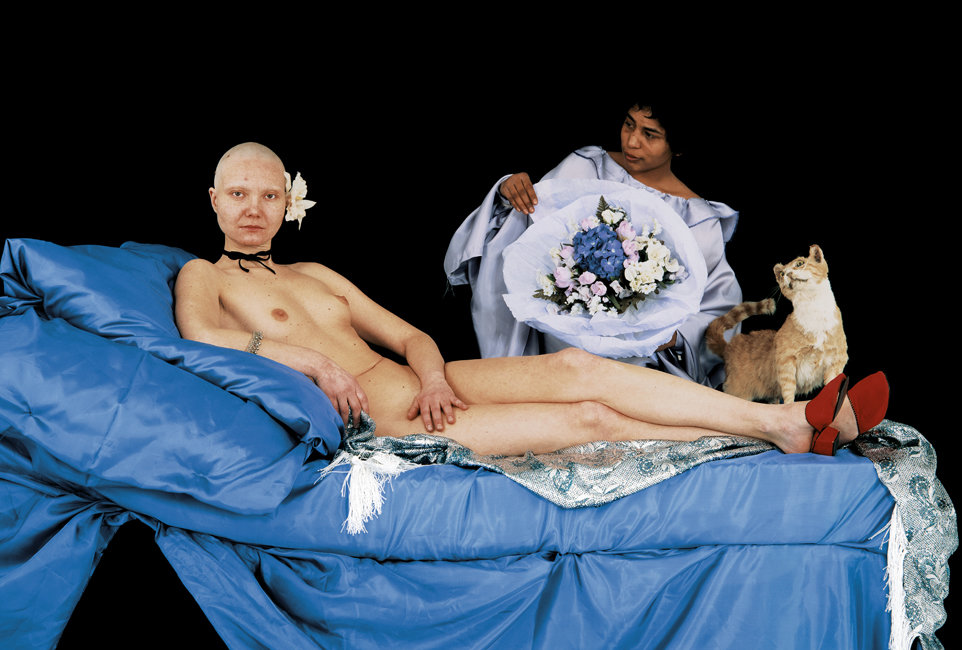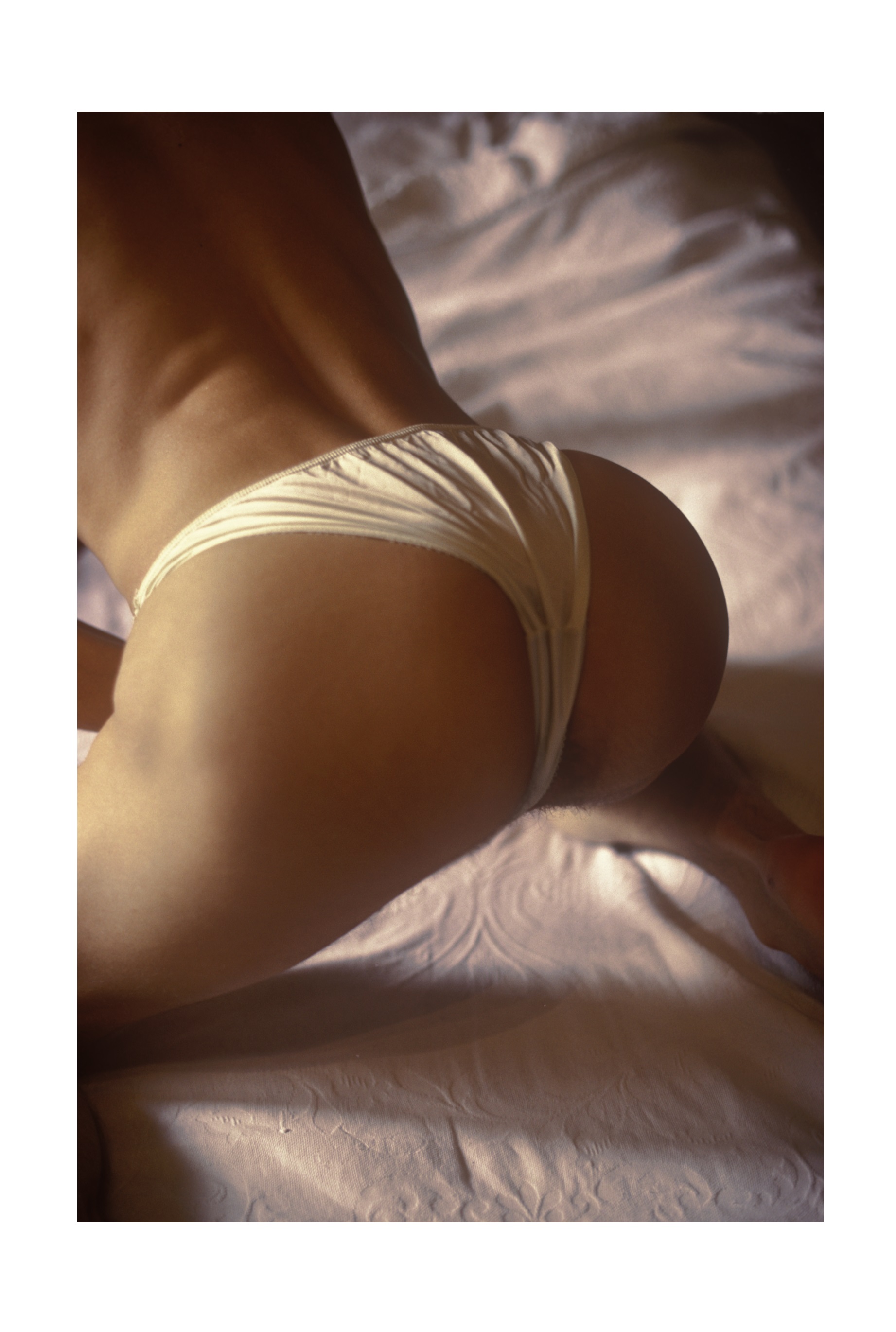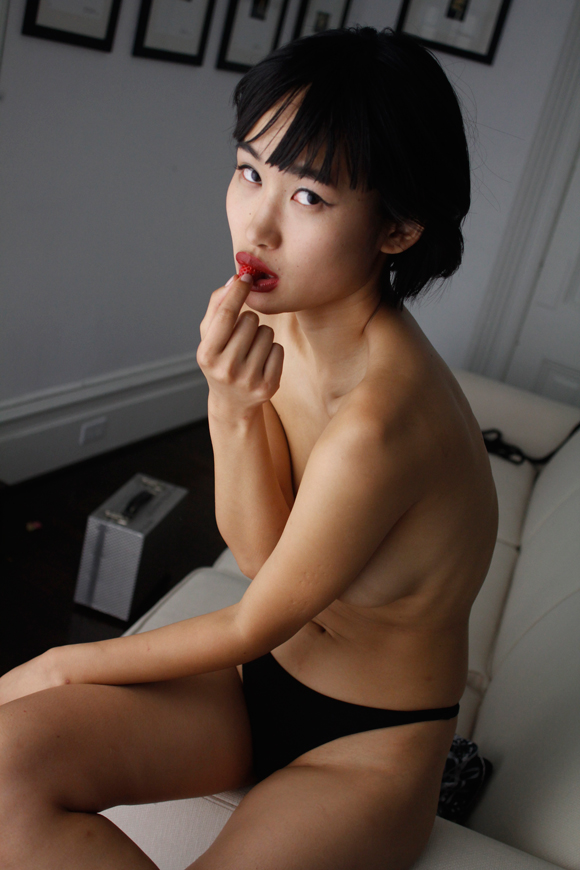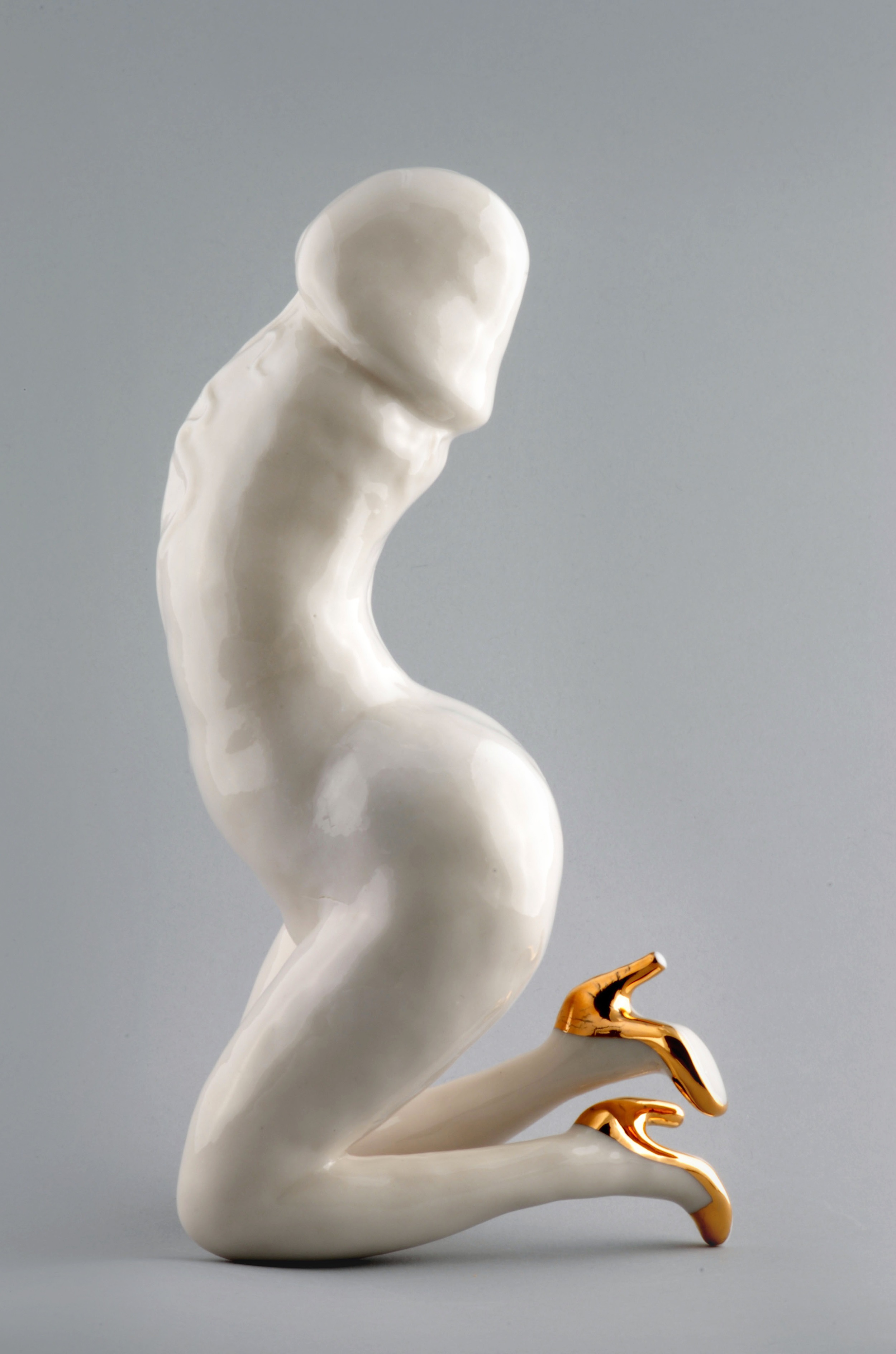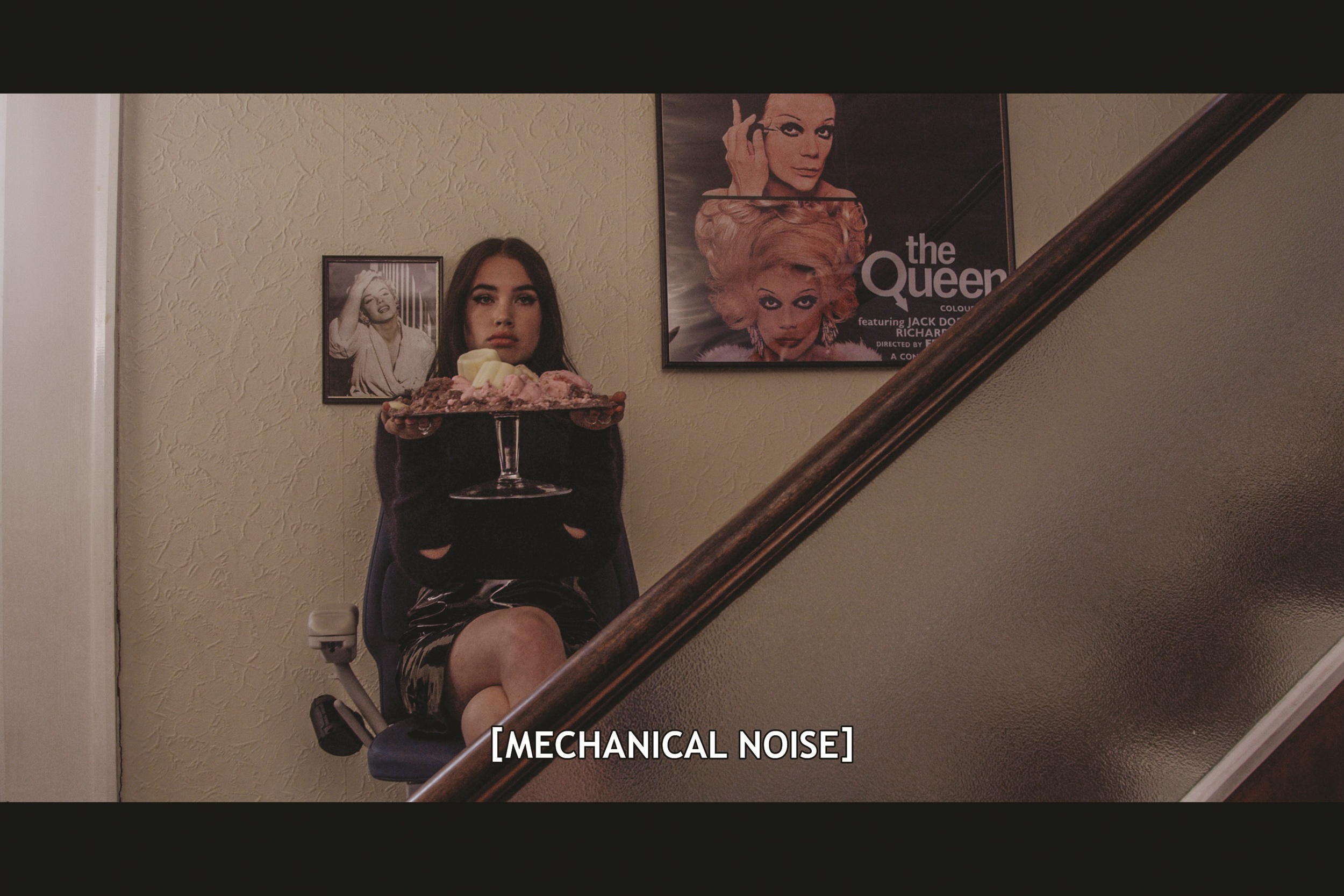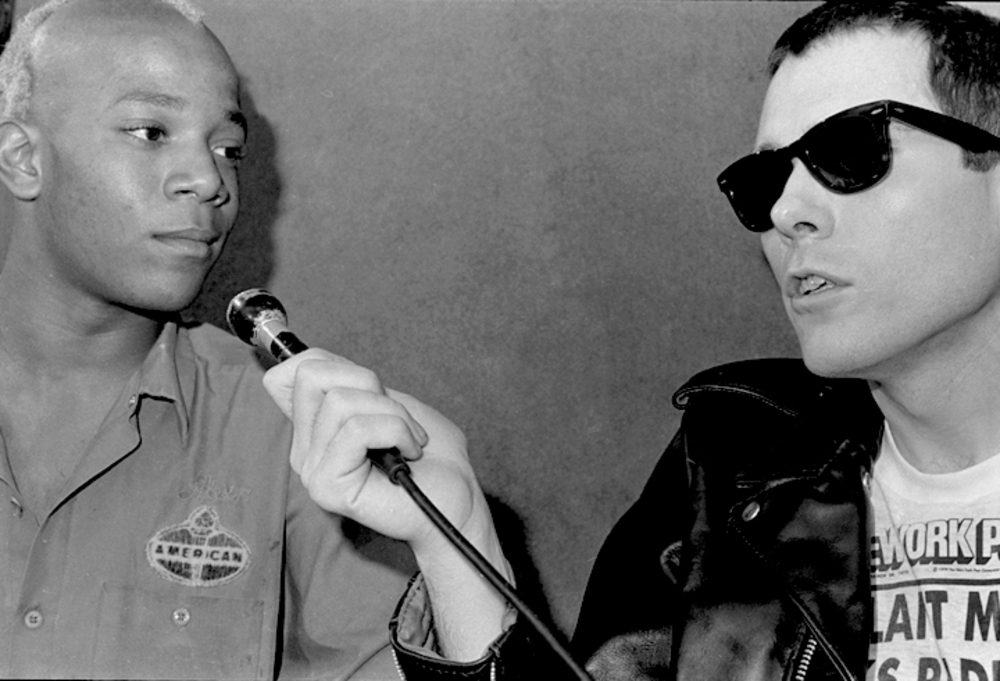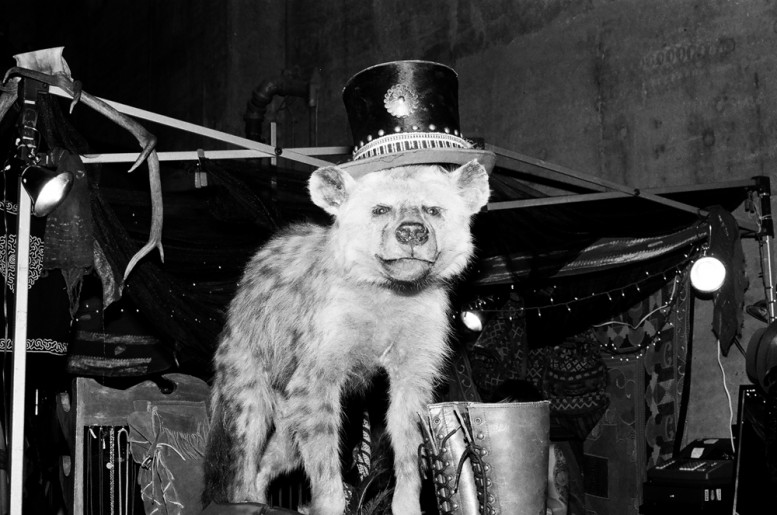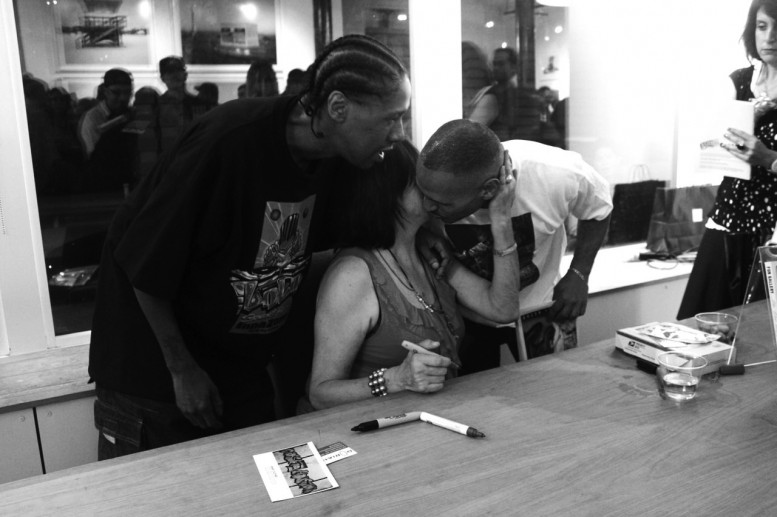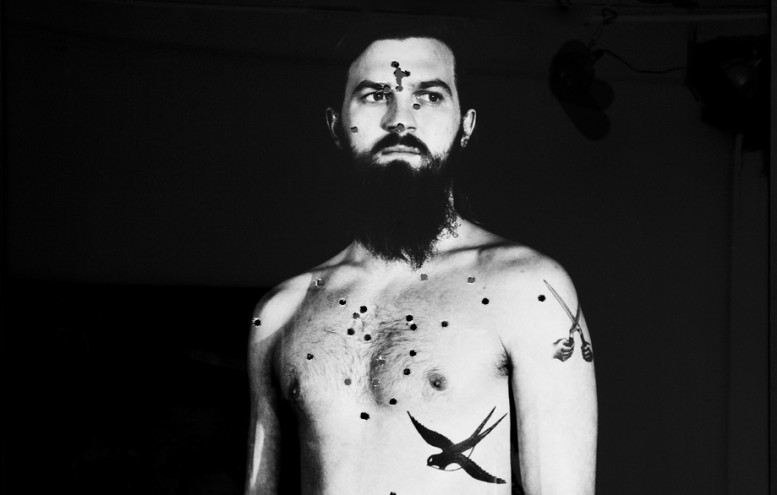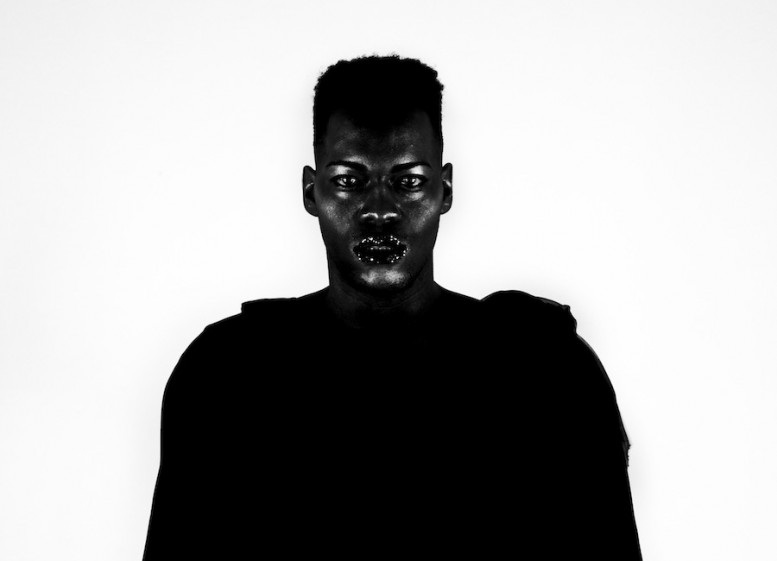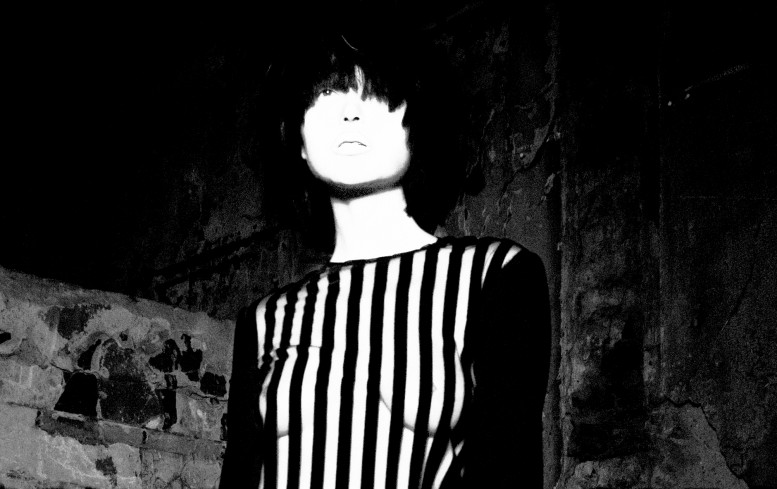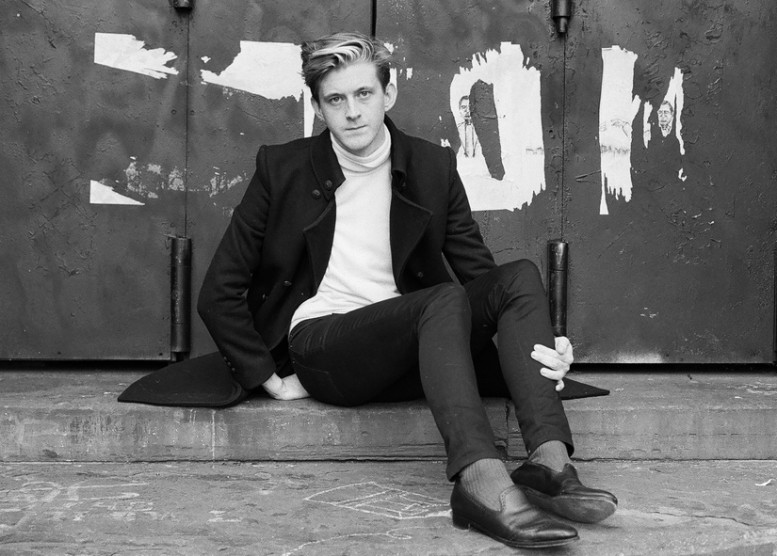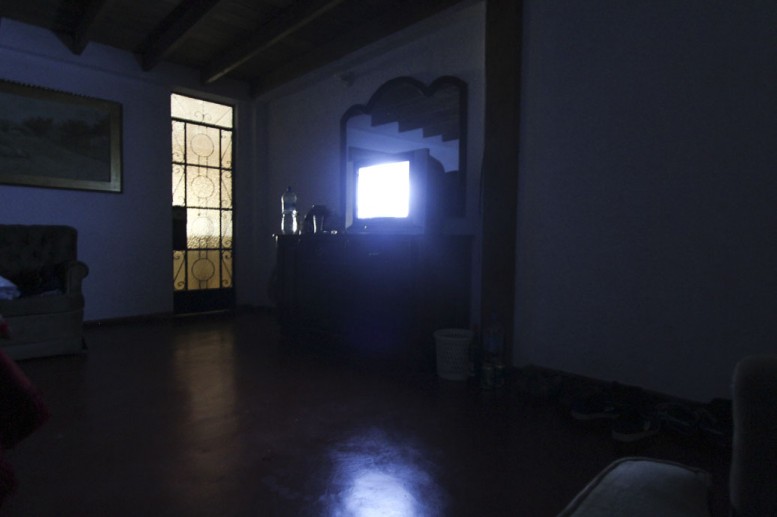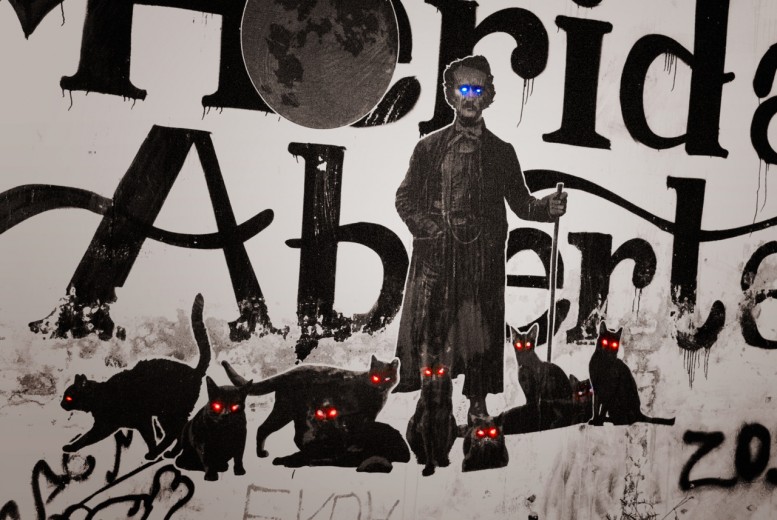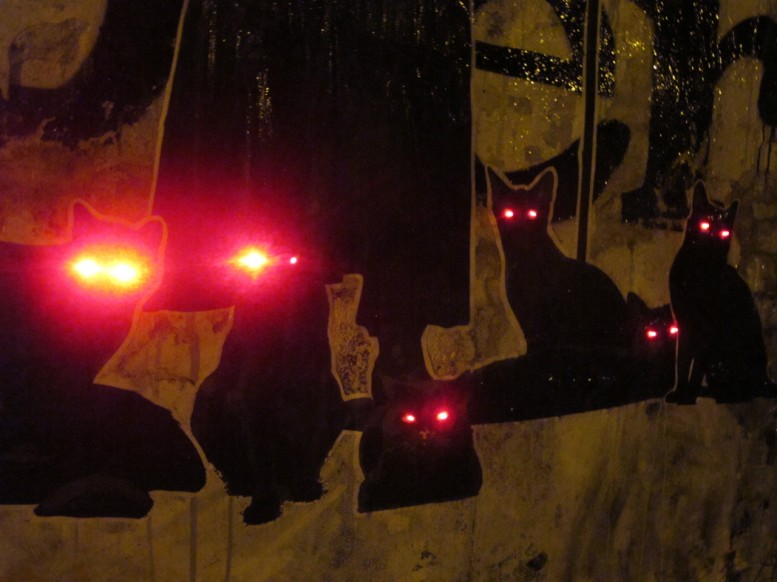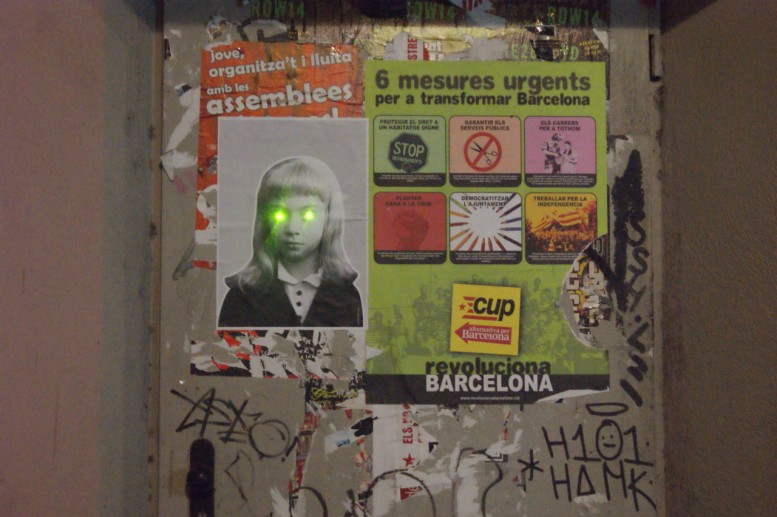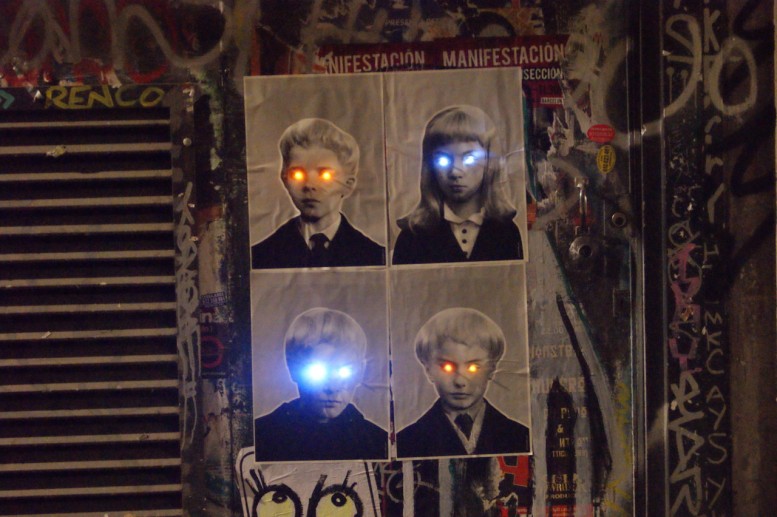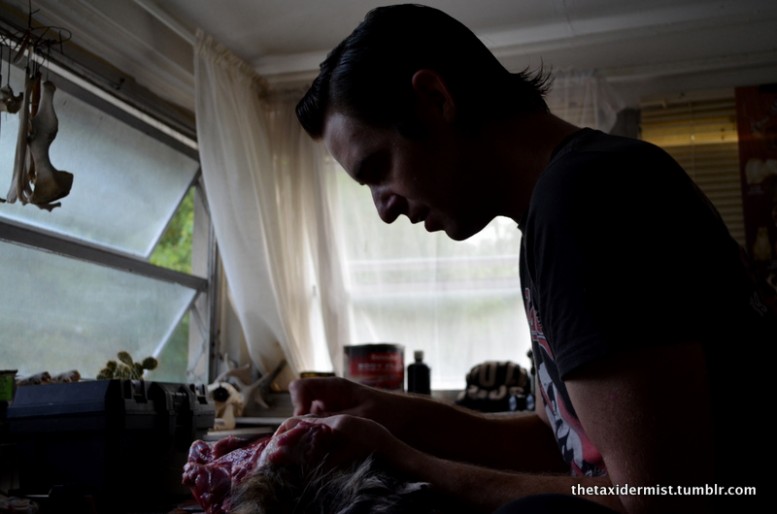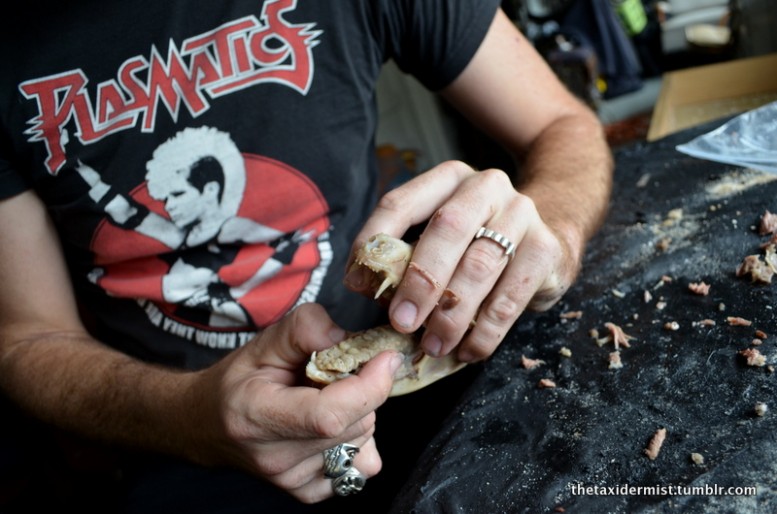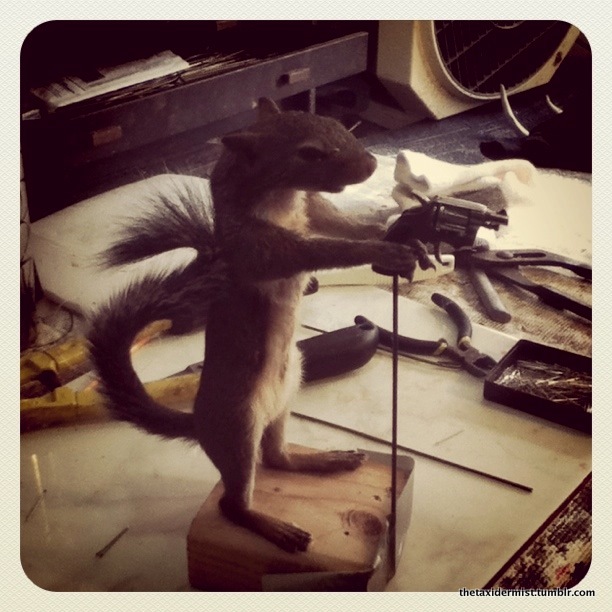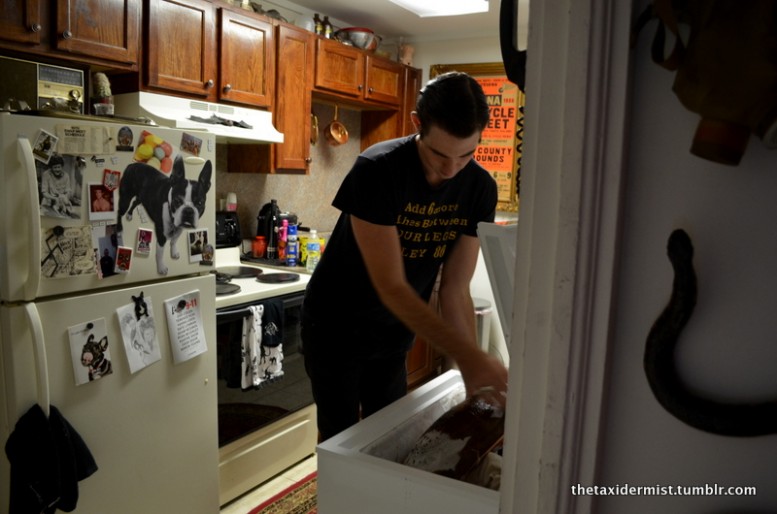Ezra Woods and Alia Raza’s alchemical romance started about ten years ago with a mutual love of flowers. It should be noted that Ezra and Alia are not a romantic couple, but they are bound by some other fateful and supernatural force of nature that allows for their close collaborative efforts. After ten years as close friends, the pair decided to start Regime Des Fleurs, a “postmodern lifestyle art-practice” disguised as a luxury perfume brand. Before starting the brand, Alia was a video artist in New York City and Ezra was a stylist in Los Angeles, but they weren’t exactly satisfied with where their careers were going. We met up with the pair a few weeks ago, and Ezra recalled his grandfather's long-time love of flowers. It is understandable where Ezra’s love of organic fragrances comes from. Alia is just as infatuated, and in the following interview recalls being enraptured by the perfumes on her mother’s vanity. Currently, Regime Des Fleurs includes ten scents – separated by three tiers: Lyrics, Ballads and Epics. With ingredients such as palo santo, extractions of Laotian and Indian agarwoods, and Indian blue lotus, their fragrances take you on an enchanted journey though history, from the opulence of Ancient India to the era of Louis XVI and Marie Antoinette and all the way up to 20th century high modernism. All in all, what Ezra and Alia have achieved with Regime Des Fleurs is something very rare for a perfume brand: a unique identity. In the following conversation, Autre chats with the duo about their origins, their inspirations and influences, and they give a hint of what’s next for Regimes Des Fleurs (hint: a candle is in the works and so is an edible fragrance).
AUTRE: So how did you two meet, and did you know right away that you guys wanted to work with each other?
ALIA: We met through my roommate ten years ago, and we had no idea whatsoever that we would ever work together for the first nine years that we knew each other.
EZRA: We were friends, and we did kinda fun things together, but we never thought that we’d end up working together.
AUTRE: Did you know that you had shared interests?
ALIA: Aside from flowers and perfume, I don’t know how many overlapping interests and references we had until we got to know each other a lot better––and then we realized that we had tons in common.
AUTRE: So when was that specific moment when you knew? Can you describe it?
ALIA: We had a dinner one evening, about two years ago, and we started talking about how I was making art, and how I loved what I was doing but also wanted to turn it into more of a business type thing.
EZRA: We were both in transition with our careers. Sort of not satisfied with where we were professionally, and in some ways creatively. Although Alia had received a lot of validation and recognition for what she did, she wasn’t making money and turning it into a business.
AUTRE: And, Alia, you were in video art?
ALIA: Yeah I did video art, and made one short film and wanted to direct movies. But I think we both did a lot of work that we loved and that we were proud of, but supporting yourself doing creative work is difficult. So I think separately, we had each thought about creating objects to sell. But only when we came together two years ago, and had this one dinner in Beverly Hills, did we actually discuss what it would be like if we had a brand together, and what the kind of codes of the brand would be––what we’d be wanting to say with what we made.
AUTRE: Was it specifically fragrance? Or was it more abstract?
ALIA: It was fragrance, it was beauty, it was fashion, it was an art practice all rolled into one.
AUTRE: So like a collective?
EZRA: Yeah, a collective. But it was more, and still is more about what the brand is about than any kind of particular output, I would say. Does that make sense? It’s about the idea of the brand in a way. The meaning of the brand.
ALIA: It’s about seeing the world in a certain way.
AUTRE: So going back a little bit, Ezra, I read another interview that said you used to wear cologne to kindergarten. So I want to talk about some of your background in fragrances, because it seems like that goes back really early, that you’ve had a long love affair with fragrances.
EZRA: (Laughs) Yeah, I think my folks are really aesthetic, sensual people. They raised me and my brother to appreciate those things and consider them in a way that’s more than frivolous, or extra, or unimportant, or a second thought. So from a really young age that was always really important to me, and then as I got older I started to think about things in a more critical and analytical way. Because I’d always loved perfume and it was a part of my life, I started to see it that way also. Kind of considering what this perfume is saying, not just that it smells good. What it means. I guess since a young age that was always part of my life, and as my mind expanded and grew, so did my relationship to that one thing. But you should ask Alia about her experience with perfume, it’s really interesting.
ALIA: We were both obsessed with perfume from a really young age. I was fascinated by my mother’s vanity with all the perfumes on it, and even my father’s colognes. I loved smelling different shampoos, and I was just really into smell. I loved the idea that you could bottle it. But I was also really into the flowers in our garden, and the lilacs and all of that.
EZRA: But you remember what perfume you were wearing when you met everyone. You always remember what perfumes other people like. You always remember what people wear.
ALIA: Right. I got kicked out of 7th grade math class once because I was wearing way too much dewberry perfume from the Body Shop. My math teacher, Mr. Dam was like “I can’t handle it.”
AUTRE: Amazing.
EZRA: To add to the question for both of us, it’s kind of always been one thing that was a lens through which we see other things. And understand and relate to the world.
AUTRE: My next question is about nostalgia and how that ties into the scent of perfumes. Can you recall any scents associated with a specific memory that stands out the most?
ALIA: For me, if I wash my hair with a certain shampoo, I’m like back in 9th grade. You know what I mean, 100 percent there.
EZRA: I get more feelings than specific recall of a moment in time. On Wednesdays I go to the farmers market, and I buy flowers for both of us because I like us to have flowers in our houses because it’s what inspires us. I bought ginger lily and I hadn’t smelled it for a long time. It completely made me feel like a child, and I don’t even remember where I smelled that but it transported me emotionally; smelling that and feeling like a child. It was so weird and intense and amazing.
water/wood A forest underwater. On a tranquil forest walk. A cool bracing mist/ meets ancient sun-warmed trees.
With pale herbs, palo santo, sparkling young pine needles, myrrh resin hydrosol, rosewood, driftwood, himalayan cedarwood dust, hawaiian sandalwood oil, dried wild tobacco bud, orris root butter, white lotus blossom absolute, and crystallized amber.
AUTRE: So making the fragrances by hand, how long does that process take? From finding the ingredients to bottling it, what is that process like?
EZRA: We’ve been collecting and discovering ingredients on our own since before we started our company. And then together we constantly are collecting ingredients. Discovering new things, ordering samples, trying them out and experimenting with them. Coming up with a specific perfume can take anywhere from an ongoing process of three days to things that we’ve been working on for a year that we’re still not done with.
AUTRE: Do you sell internationally?
ALIA: We have one international store that’s in Saudi Arabia, and then Net-A-Porter sells our stuff in Europe. Aside from that, since the product is handmade there’s different regulations for it. So it’s difficult, we won’t be global until next year.
AUTRE: I want to talk about the bottling, which you talked a little bit about it earlier. I guess that ties into budget stuff, but creatively, the bottling and the packaging of Regime Des Fleurs is a major part because it’s so creative and brilliant.
EZRA: Thank you!
AUTRE: So how do you communicate your fragrances with the bottling? How did that come about and what is the origin of the packaging – can you explain that process?
EZRA: That’s a really interesting question.
ALIA: We always start everything by talking a ton.
EZRA: Yeah we talk about everything ad nauseam sometimes but it’s always fun.
ALIA: But it’s just a lot of conversation to figure out how we want to start. Ezra will be like “I think we should do a paper label” and I’ll be like “what are you talking about, what kind of paper?” and then he has to clarify. There’s a lot of explaining and a lot of communicating.
EZRA: We like a lot of the same things, but there’s a lot of things that one of us appreciates and the other isn’t into or vice versa.
ALIA: And then we have to convince the other one that it’s cool or worth it.
EZRA: But it’s kinda fun.
AUTRE: It’s like a constructive duel.
EZRA: Definitely! So when we came up with our packaging it was really about conveying ideas and feelings. To us, we see it as a lot of different elements happening in harmony to create our vibe.
ALIA: It’s a little bit of Memphis, it’s a little bit of…
EZRA: 80s mall.
ALIA: A mall in the 80s, yeah totally. A little bit of rococo baroque.
EZRA: Rococo baroque or late 18th, early 19th century France.
ALIA: A little bit masculine, and just very simple. They almost look like skyscrapers if you line them up. But then the colors can be childlike, or feminine, or punchy.
AUTRE: And you use really interesting paints and materials too right?
EZRA: Yeah, so we developed our first samples which was how we kind of created the design. We were like “we want to kind of paint these bottles” but then we didn’t know what we were fully going to do until we figured out how the bottles were going to be painted, and then through that process and working with that first person who was actually an art fabricator that works with a lot of artist friends of ours, we figured out the design. That was really weird and cool because it just kind of happened.
ALIA: Well, there were a couple things. We were on a deadline. You know we had this opportunity, to go to Paris to show whatever we had come up with by March 1st. We had only started working on the packaging in January so we literally had six weeks to figure it all out.
EZRA: And no money.
ALIA: There was a deadline, we had to get them finished, I wasn’t sure at all about doing color. Ezra really wanted to do color badly, we tried doing it and then we both loved the way it came out… but if one of us had hated it, I don’t know what we could have done. We wouldn’t have been able to go to Paris. There was no choice. Luckily it worked.
EZRA: (Laughs) It worked.
ALIA: Our logo also was designed by an old friend.
AUTRE: The logo’s great.
EZRA: Thank you! Oh my god we love our logo so much. If you look at what our references were, and then you look at how the logo came out; we couldn’t have imagined it to be more of what we wanted.
ALIA: And the girl who did it, doesn’t even do logos. She’s an illustrator and a photographer and a fashion designer but she was like “I don’t want to do a logo, I don’t know how to do a logo” and we were like “you’re the only person whose taste we trust and you get us and I’ve known you since I was 16.” And she did it and it was great.
EZRA: We were like “just draw it, we’ll vector it, we’ll add the copy to it. We don’t need any of that, we just want you to draw the framework and basically create the gist. We’ll take it from there.”
ALIA: Because we’d done color for the bottles, we were like let’s go back to one of the original ideas and do totally colorless for the boxes.
EZRA: So our whole brand code developed out of that, which was extreme color and pop and emotion with product.
ALIA: And then a very stately, restrained outside.
AUTRE: It seems like a perfect combination.
ALIA: Yeah, it kind of is. The gray boxes all lined up kind of look like…
EZRA: Your personality?
ALIA: Me, and then the colored bottled line up with Ezra.
EZRA: I would say the colored bottles in a mess look like me.
ALIA: When they’re cracked and chipped.
EZRA: When they’re cracked and chipped and laying all over each other.
ALIA: But the gold crest’s both of us.
AUTRE: Yeah, it’s great. I want to talk about history, because history plays a lot into your descriptions especially.
ALIA: We’re obsessed with the romance of history.
AUTRE: 18th century Europe, 20th century high modernism; can you talk a little bit about that and your interest in history?
ALIA: What’s more fascinating than the history of humans and civilization?!
EZRA: Things that have happened that are extreme that aren’t a part of our everyday lives anymore. Alia and I both have certain things that we’re obsessed with, and we share them. Moments in time, and stuff that we know a lot about. When we were little kids we were both obsessed with Versailles. Kind of everything from the 17th and 18th century mostly, but in a weird way we’re both similar where we sometimes just want to spend a day by ourselves and learn about things. Sometimes on a Sunday Alia will be texting me throughout the day and be like “did you know that…”
ALIA: …That Marie Antoinette only drank hot chocolate with orange flower water?
EZRA: Yes. Or I’ll text Alia and be like “will you google Laiterie de la Reine” which was this amazing grotto which was designed for Marie Antoinette.
ALIA: It’s always about Marie Antoinette.
EZRA: It’s always about Marie Antoinette, no it’s about a lot of other weird things. I don’t know, people that wear flowers as jewelry for example.
ALIA: I also think that for me at least, the older I get the more that I appreciate and care about history. The more moved I am when I go to other cities or countries and see old stuff. I think when you’re younger, for me at least, I was much more interested in what was happening in the world right now, and the older I get it’s more fascinating to me what has already happened.
Nymphaea Caerulea A singing iridescent floral An out of body experience, Nymphaea Caerulea dances on the skin with an extremely rare hyper-purified extraction of the sacred blue waterlily. Like the enchanting call of Sirens to chosen wayward ships, the mesmerizing base of Nymphaea Caerulea features an abundance of genuine White Ambergris, supported by celestial notes and shimmering accords composed of 80 ingredients: both precious naturals and intuitively selected aroma materials.
With Indian blue lotus, Hawaiian blue lotus, white ambergris, aurora reconstitution, Nile waterlily headspace, pandanus amaryllifolius, salty water, and the absolutes of 15 flowers.
AUTRE: What led to now?
ALIA: Yeah! What led to now?
EZRA: There’s all this stuff from the past that was executed without the conveniences that we have today that would be extreme and amazing with those conveniences and the fact that they were done despite having computers or electronics, whatever, it makes it even more moving. We kind of fetishize the aesthetics of the pre-industrial world.
ALIA: But at the same time we’re not interested in going back. We really appreciate the fact that we were raised in a democracy. It sounds pretentious but I don’t care. Our brand is pretentious.
AUTRE: Well it’s glamorous, there’s a distinct glamour that emanates from your brand, and that certainly ties into a lot of different things. We live in a weird world where attention to detail, attention to making things by hand is not there at all.
EZRA: We feel that way completely. I guess going back to that first conversation we ever had, the main point of the conversation was that we wanted to have a brand and create products that spoke to us directly; the things that we wanted that we felt like we couldn’t get.
ALIA: We were sophisticated consumers who had always paid attention to luxury, and so we thought: what can we make that we would be impressed by? That we would think is special?
AUTRE: Sure.
EZRA: I always say that if I wasn’t responsible for the brand or the products, and I had come across it, I would be obsessed with it. That’s kind of our standard: obsessibility.
AUTRE: Can you talk about the first and second collections and how they differ?
ALIA: I think that we would say that the first collection is all about water. They don’t all smell watery, but to us they all have something having to do with water. Whether it was cool mist, or freezing cold. “Dove Grey” is vapor, or running water in “Water/ Wood.”
EZRA: Ocean water in “Nymphaea” and in “Nitesurf.”
ALIA: Yeah the first collection to us is more about water and the second collection is more about texture.
EZRA: That’s the real thing, the second collection is really about texture. Sparkling, oily, radiant, bisque, porcelain, those were a lot of the things. Then the stories became a little bit different. The first one was a lot more whimsical and the second one is a little bit more serious I think. We’re weirdoes but there’s a logic there.
AUTRE: Well it’s abstract and it’s very hard to put a fragrance into words that make any sense besides the actual name of the fragrance. You want to create a sort of story with those fragrances.
ALIA: The truth is, like with almost anything else, you can spin something either way. We could spin “Dove Grey” as an all-synthetic industrial smelling perfume, or we could spin it as a natural root.
EZRA: But they’re both true. It’s interesting how what you were saying relates to the way we approach what we do, which is almost painting meets cooking, meets poetry, meets science. All this stuff happening. We see it really layered and intensive I guess. Because we talk about it so much we’re on the same page about it.
ALIA: When I used to do film and video, I used to say what I loved about doing it was that it was a combination of all these different art forms. The acting, the costumes, the camera, all of it came together to do one thing. I actually feel like what we do now, together, is even more that way.
AUTRE: So what’s your personal favorite fragrance that you make?
ALIA: Ezra’s is “Nymphaea Caerulea.”
EZRA: I love wearing it, but it’s not necessarily my favorite to wear. But it’s my favorite that we’ve made. I like them all. There’s something about all of them because I feel like they’re all accomplishments.
ALIA: They are! My favorite is “Bel Époq.” If I could only choose one, it would be that one.
EZRA: More than “Floralia”?
ALIA: Yeah!
EZRA: Really? Huh. That was fun to make. That took a long time, Bel Époq. Months.
ALIA: It’s our most classic light floral. Gardenia, jasmine, that kind of thing, that’s what I respond to. That’s really all I care about.
AUTRE: That’s interesting. So let’s talk about the next collection.
EZRA: Ok! There’s a lot of stuff coming up.
ALIA: There’s a few next collections, but before we release the third collection which is going to be called “The Third Collection” we have a series of individual products and collaborations coming out. So we can talk about those if you want.
AUTRE: Yeah! Go for it.
ALIA: We have an edible perfume, originally it was made for a restaurant in New York called Dimes because they asked us to make a Regime Des Fleurs cocktail with them. It’s on their menu and it’s their most popular cocktail. It’s insane. You can’t go to New York without going to Dimes.
EZRA: Next time you go you have to go to Dimes, it’s the best place.
ALIA: So there’s the edible perfume, there’s the collaboration we’re working on with a brand called Hood By Air.
AUTRE: Oh yeah they’re great.
EZRA: We kind of have an ongoing relationship with them, we scented one of their shows with this perfume called “Fauna” that’s from our second collections. We’ve done a couple of things offline together. We’ve known them for a long time, it’s a fun relationship.
ALIA: We’re also launching our very first candle, which is going to be a limited edition of only 75 of them and it’s in collaboration with Maxfield.
EZRA: And this Italian company called Bloc Studio, they make marble stuff. It’s called “Dregs.”
ALIA: Yeah the name of the scent is “Dregs” as in wine dregs.
EZRA: It’s the remains of the wine, but also dregs of society. It’s incredible, it’s really really good.
ALIA: It smells so good. It’s very dark and gothic.
EZRA: And every time we’ve smelled it we’re like “shit we did good with this one” (laughs).
ALIA: We’re getting better and better, the perfumes get better and better we think.
AUTRE: So when are these projects going to be launched?
ALIA: The Maxfield collab comes out in December
EZRA: The edible perfume called “Timelapse” should be out Black Friday. There’s so many people that we like and respect and we see adjacencies with our brand, that we want to work with tons of people. There’s also three or four other people that we’re talking about doing collaborations with but they’ll probably all be in the new year. We’ll see.
To learn more about Regime Des Fleurs, visit their website here. Text and interview by Oliver Maxwell Kupper. Photographs by Sara Clarken. Follow Autre on Instagram: @AUTREMAGAZINE



